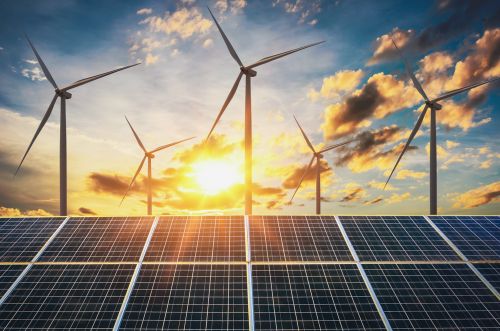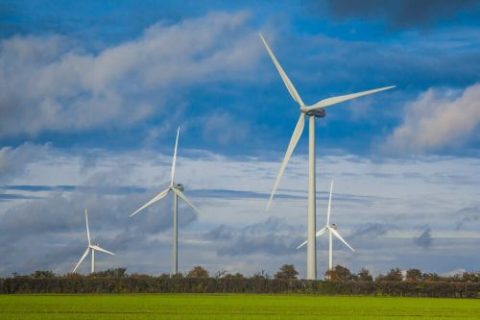A lot of countries are now trying to clean up their act and go Green Power Grids. Governments in many countries are the ones that create such national policies to make the use of renewable energies even more appealing than the non-renewable fossil fuel energy. This is done to accommodate national pledges with respect to the Paris Agreement on climate change. Even though everyone has found it is difficult, especially when it comes to changing things, some have been more successful than others. The countries that have the highest percentage of electricity from renewable sources are all the ones that are rich in minerals like geothermal, hydro, and wind power and most of them have little electricity grids.
Developing nations with renewable sources covering a higher percept of their electricity production are in continuous transition, and thus it is evident that the governments are increasing their investments to speed up the process of green transition in their country. Apart from this, the rise of the more renewable energy sources such as wind or solar to feed into bigger power grids is also being witnessed within some nations. In the year 2023, the countries with the cleanest grids are Paraguay, Bhutan, Lesotho, Nepal, Ethiopia, Norway, Switzerland, Iceland, the Democratic Republic of Congo and Albania, highlighting the fact that the green transition is not concentrated in any particular region of the world.
5) Ethiopia: 98. 1%
Ethiopia, in the Horn of Africa Region, receive most of its power from clean resources, mainly hydropower, biomass, wind, solar and geothermal energy. Ethiopia is the highest in terms of production of hydro power in Africa and in fact, the sector contributes approximately three quarters of the national electricity requirement. The Omo-Giber River Basin supplies approximately 45 percent of this hydropower, using three major dams. In the last years, climate change increase has affected Ethiopia severely, where drought has the bad effects on its capability to generate power for years.
Ethiopia has the ability of generation 60 000 MW of electric power from water, wind, sun and earth sources. Ethiopia has been unable to fully exploit its natural energy resources because it has not had enough investment in the past. As given today, the country has around 5,200 MW installed generation capacity and the government has a hope of achieving the goal of 17,000 MW in the next 10 years. However, there may be a fear that the demand might outpace supply if both the economy and the population continue to grow.
4) Nepal: 98. 4%
Nepal harvests over 97 percent of the electricity resource from the renewable raw materials called hydropower. This is achieved through the natural resources of Nepal, which includes the mountains, glaciers and rivers that have falling water for hydropower production. The Nepal generates around 2,200 MW of hydropower, while the country has a potential of 50,000 MW of hydropower. If it is fully exploited, it will be a world leader in hydropower. The country has given many citizens in South Asia significantly its electricity access in recent years just two decades ago, and 94 percent of population of this country now has electricity, which is heavily supported by China, a critical partner.
Nepal keeps on depending on biofuels and waste for its energy needs, with around 21 million people still using the traditional biomass for cooking. In 2021, the biofuels and waste generated retrieved captures around 67. For instance, 6 percent of Nepal’s energy.
3) Lesotho: 99. 3%
Lesotho in southern Africa mainly uses hydropower for its electricity, while solar and wind power are the sources of only a small amount of energy, and biomass is the means of cooking and heating in the rural areas. Its voltage regulation system is so advanced that it can move among divided areas of the country and regenerate current through the use of hydro electric sources with a generation capacity of 73 MW.
To be precise, the Muela Hydro plant generates approximately 72 percent of the hydroelectric power in the country. Government approved Polihali Dam, projected to be productive during 2028 and to improve the grid total capacity by additional 8MW. Only some of the households in Lesotho have access to electricity, and this is mainly in the urban areas in the country. The government earlier released a plan to close this gap to 75% of households by 2022 but did not hit this target.
2) Bhutan: 99. 8%
Having a secure power source is something that Bhutan, a south-Asian country, is largely achieved through hydropower use, which amounts to almost 99% of its total electricity production. 7 percent. The huge forest area of the country has assisted it in attaining net zero carbon emissions, becoming one of the three countries in the world that are carbon-negative, the others being Suriname and Panama.
In April 2024 European Investment Bank (EIB) decided wholy $ 160 to loan. The overall plan includes $2 million loan to Bhutan whose major utility is geared towards the development of the renewable energy sector – mostly solar and hydro projects in remote regions of the country. The growth of Bhutan’s solar power industry will be a step forward for the country to minimize the spending on energy imports during the dry months of the year, and at the same time, it will be an energy diversification support.
1) Paraguay: 100%
The Paraguayan power grid managed to beat all odds of the power sector in 2021 and reached a 100% clean electricity supply. South of the horizon, Hydropower produces 100 % of the electricity of this country with an average yearly output of 9 GW of power and therefore the third largest Hydro Power producer globally. Most of this energy is generated by the Itaipu Dam, which supplies 70 percent of the country’s electricity and also the energy exports to the neighboring Brazil.
Although Paraguay has already reached 100 percent clean energy production, the country is not going to stop there. It has plans to diversify its renewable energy mix. The government enacted the NCRE legislation throughout the year, which is dedicated to guiding the growth, utilization, production, generation, promotion, as well as development of electricity from renewable energy sources that are natively non-conventional other than hydroelectric. According to Minister of Public Works (MOPC) Claudia Centurión “This regulation will enable private sector energy generation through the mix of latest technologies and will promote innovation which will in turn launch new industries, that will bring more employment and sustainability. ”
Read also Energy Efficiency and Innovation: The Design Philosophy of Companies in this Field
Read also Can Colour Choice Help Save Energy?


